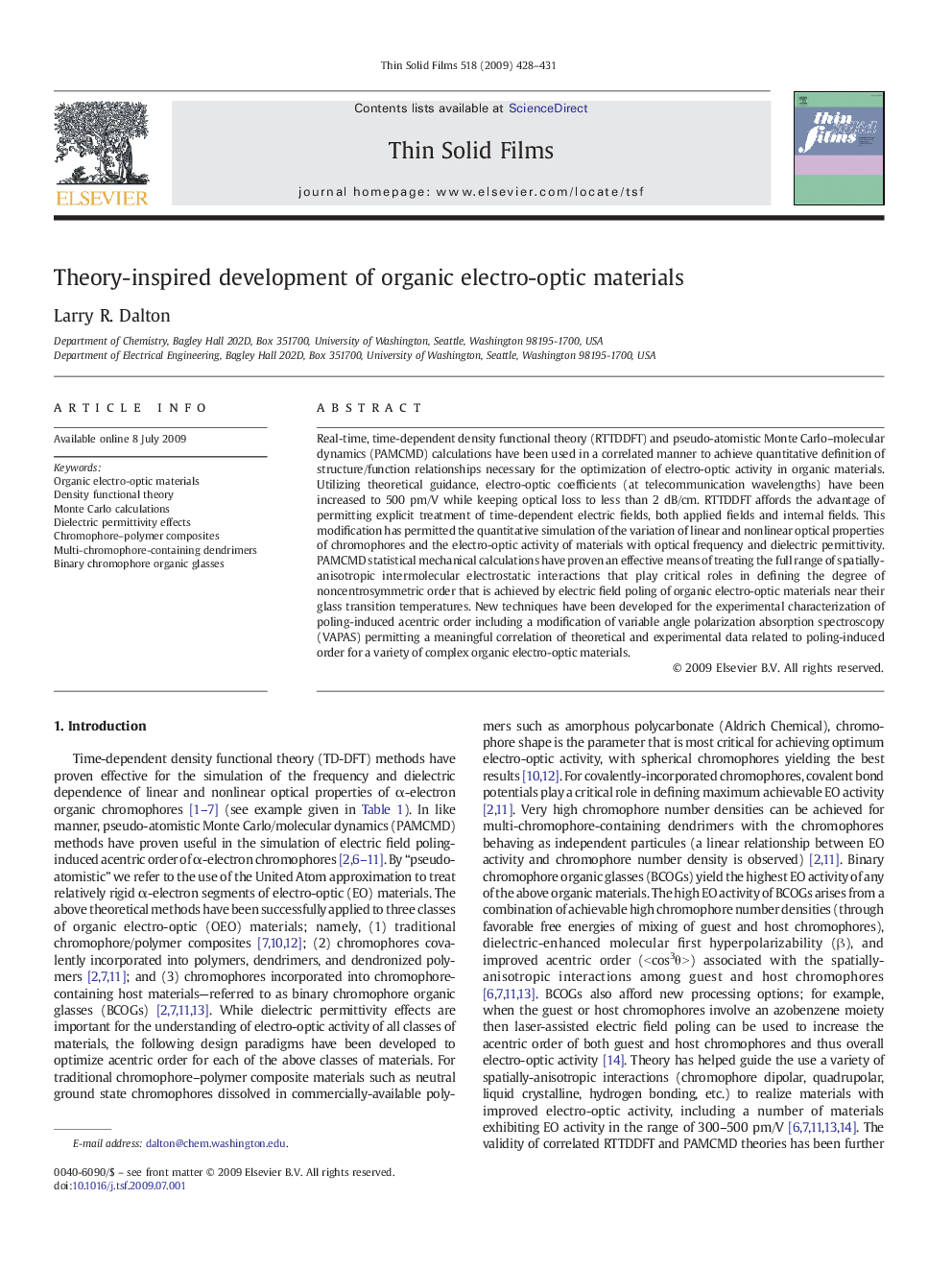| کد مقاله | کد نشریه | سال انتشار | مقاله انگلیسی | نسخه تمام متن |
|---|---|---|---|---|
| 1672130 | 1008929 | 2009 | 4 صفحه PDF | دانلود رایگان |
عنوان انگلیسی مقاله ISI
Theory-inspired development of organic electro-optic materials
دانلود مقاله + سفارش ترجمه
دانلود مقاله ISI انگلیسی
رایگان برای ایرانیان
کلمات کلیدی
موضوعات مرتبط
مهندسی و علوم پایه
مهندسی مواد
فناوری نانو (نانو تکنولوژی)
پیش نمایش صفحه اول مقاله

چکیده انگلیسی
Real-time, time-dependent density functional theory (RTTDDFT) and pseudo-atomistic Monte Carlo-molecular dynamics (PAMCMD) calculations have been used in a correlated manner to achieve quantitative definition of structure/function relationships necessary for the optimization of electro-optic activity in organic materials. Utilizing theoretical guidance, electro-optic coefficients (at telecommunication wavelengths) have been increased to 500Â pm/V while keeping optical loss to less than 2Â dB/cm. RTTDDFT affords the advantage of permitting explicit treatment of time-dependent electric fields, both applied fields and internal fields. This modification has permitted the quantitative simulation of the variation of linear and nonlinear optical properties of chromophores and the electro-optic activity of materials with optical frequency and dielectric permittivity. PAMCMD statistical mechanical calculations have proven an effective means of treating the full range of spatially-anisotropic intermolecular electrostatic interactions that play critical roles in defining the degree of noncentrosymmetric order that is achieved by electric field poling of organic electro-optic materials near their glass transition temperatures. New techniques have been developed for the experimental characterization of poling-induced acentric order including a modification of variable angle polarization absorption spectroscopy (VAPAS) permitting a meaningful correlation of theoretical and experimental data related to poling-induced order for a variety of complex organic electro-optic materials.
ناشر
Database: Elsevier - ScienceDirect (ساینس دایرکت)
Journal: Thin Solid Films - Volume 518, Issue 2, 30 November 2009, Pages 428-431
Journal: Thin Solid Films - Volume 518, Issue 2, 30 November 2009, Pages 428-431
نویسندگان
Larry R. Dalton,